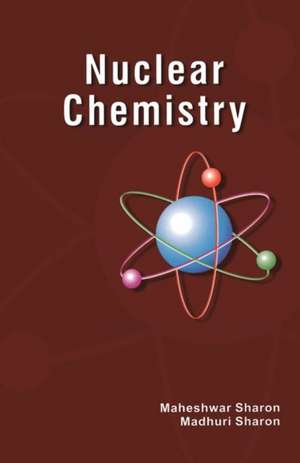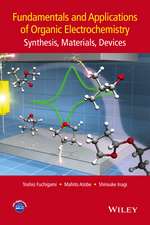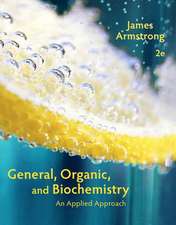Nuclear Chemistry: Detection and Analysis of Radiation
Autor Maheshwar Sharon, Madhuri Sharonen Limba Engleză Hardback – 25 sep 2009
| Toate formatele și edițiile | Preț | Express |
|---|---|---|
| Paperback (1) | 419.06 lei 43-57 zile | |
| Springer International Publishing – 2 feb 2022 | 419.06 lei 43-57 zile | |
| Hardback (2) | 531.72 lei 43-57 zile | |
| Springer International Publishing – 2 feb 2021 | 531.72 lei 43-57 zile | |
| ANE Books – 25 sep 2009 | 1098.62 lei 43-57 zile |
Preț: 1098.62 lei
Preț vechi: 1479.82 lei
-26% Nou
Puncte Express: 1648
Preț estimativ în valută:
210.22€ • 220.08$ • 173.94£
210.22€ • 220.08$ • 173.94£
Carte tipărită la comandă
Livrare economică 07-21 aprilie
Preluare comenzi: 021 569.72.76
Specificații
ISBN-13: 9781439809389
ISBN-10: 1439809380
Pagini: 230
Dimensiuni: 152 x 229 x 18 mm
Greutate: 0.48 kg
Ediția:1
Editura: ANE Books
Colecția CRC Press
ISBN-10: 1439809380
Pagini: 230
Dimensiuni: 152 x 229 x 18 mm
Greutate: 0.48 kg
Ediția:1
Editura: ANE Books
Colecția CRC Press
Cuprins
Radioactivity. Interaction of Radiation with Matter. Ionization Counters. Detection of Nuclear Radiation by Scintillation Counter. Preparation of Sources for Counting. Factors Affecting Counting Efficiency. Identification of Radioactive Isotopes. Statistics of Counting. Health Hazards and Contamination Control. Exercises. References. Index.
Notă biografică
After retiring from IIT Bombay, Maheshwar Sharon became an adjunct professor at Birla College and founded the Nanotechnology Research Center. Dr. Sharon has written more than 150 research articles for various journals and was awarded the Man of the Year by AB Inc. in 1990, 1992, 1994, and 1996. He is a Fellow of the Royal Society of Chemistry, London, a Life Member of the Electrochemical Society, India, and a Life Member of the National Academy of Sciences, Allahabad.
Descriere
Concentrating on techniques for the detection and measurement of radioactivity, this book offers a guide to selecting the type of counter, type of source sample, duration for which the counting must be made, and the radiation emitted by the isotope for its efficient detection. It introduces a novel concept to explain not only the decay processes but also the selection of counting procedures for detecting and measuring radioactivity. The author builds up the foundation from the nature of the interaction of radiation with matter. He also highlights the differences between an ordinary chemical laboratory and a radiochemical one.
Textul de pe ultima copertă
This book is designed to serve as a textbook for core courses offered to postgraduate students enrolled in chemistry. This book can also be used as a core or supplementary text for nuclear chemistry courses offered to students of chemical engineering. The book covers various topics of nuclear chemistry like Shell model, fission/fusion reaction, natural radioactive equilibrium series, nuclear reactions carried by various types of accelerators. In addition, it describes the law of decay of radioactivity, type of decay, and interaction of radiation with matter. It explains the difference between ionization counter, scintillation counter and solid state detector. This book also consists of end-of-book problems to help readers aid self-learning. The detailed coverage and pedagogical tools make this an ideal textbook for postgraduate students and researchers enrolled in various chemistry and engineering courses. This book will also be beneficial for industry professionals in the alliedfields.
Caracteristici
Offers a guide to selecting the type of counter, type of source sample, duration for which the counting must be made, and the radiation emitted by the isotope for its efficient detection Introduces a novel concept to explain not only the decay processes but also the selection of counting procedures for detecting and measuring radioactivity Highlights the differences between an ordinary chemical laboratory and a radiochemical one










